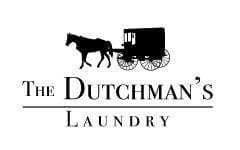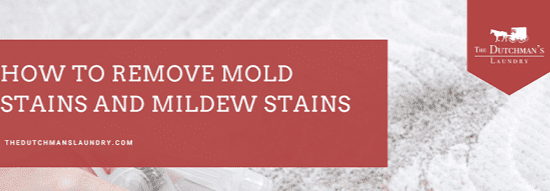Ever ruined a favorite sweater in the wash? Or found your whites turned gray? Laundry symbols can be confusing, leading to these frustrating mishaps. Many of us ignore these icons and end up damaging our clothes.
But imagine knowing exactly how to wash, dry, and iron your clothes properly. This guide is your ultimate resource for decoding laundry room symbols, empowering you to care for your garments with precision and ease. Dive in and transform your laundry routine from daunting to delightful!
Table of Contents
ToggleWhat Are Laundry Signs and Symbols?
Laundry signs are those little symbols you find on clothing tags, and they’re more important than you might think. These symbols give you clear instructions on how to wash, dry, and iron your clothes correctly. By following these guidelines, you can help your clothes last longer and stay in great shape.
Understanding these signs is important because they tell you the best way to care for your garments, whether they need a gentle hand wash or a more intensive machine cycle. Ignoring these symbols could lead to damage, such as shrinking or color fading. So, taking a moment to check these symbols can save you from potential laundry mishaps and keep your wardrobe looking its best.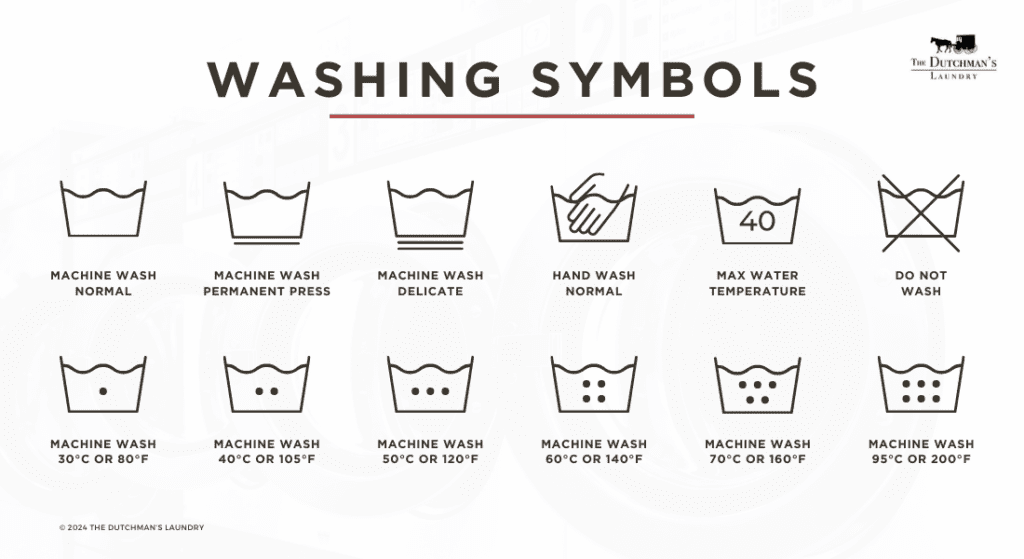
Washing Symbols
Washing symbols on clothing tags help you wash your clothes the right way. They show if you should hand wash, machine wash, or use other cleaning methods, keeping your clothes looking great.
- Machine Wash Normal: Use a standard machine cycle for durable fabrics like cotton and polyester.
- Machine Wash Permanent Press: Choose a gentler cycle with a cool-down to reduce wrinkles, ideal for synthetic fibers.
- Machine Wash Delicate: Opt for a gentle cycle for fragile items like lace or silk.
- Hand Wash: Wash by hand with mild detergent for delicate fabrics.
- Normal Max Water Temperature: Indicates the highest safe temperature to avoid fabric damage.
- Do Not Wash: Avoid water washing; consider dry cleaning instead.
Washing Temperature Symbols
- Understanding the right washing temperature is key to keeping your clothes looking great. After learning the washing symbols, it’s important to know what the temperature symbols mean. These symbols show the best water temperature for different fabrics, helping you wash your clothes effectively without damaging them.
- Machine Wash 30°C (80°F): Ideal for delicate fabrics like wool and silk to prevent shrinkage.
- Machine Wash 40°C (105°F): Suitable for most everyday clothes like cotton and polyester.
- Machine Wash 50°C (120°F): Good for more heavily soiled items, ensuring a thorough clean.
- Machine Wash 60°C (140°F): Used for durable fabrics like towels and linens, offering deeper cleaning.
- Machine Wash 70°C (160°F): Appropriate for items needing a more intense wash, such as bed sheets.
- Machine Wash 95°C (200°F): Best for heavily soiled whites and items requiring sanitization, like baby clothes.
Following these guides prevents damage and keeps colors bright.
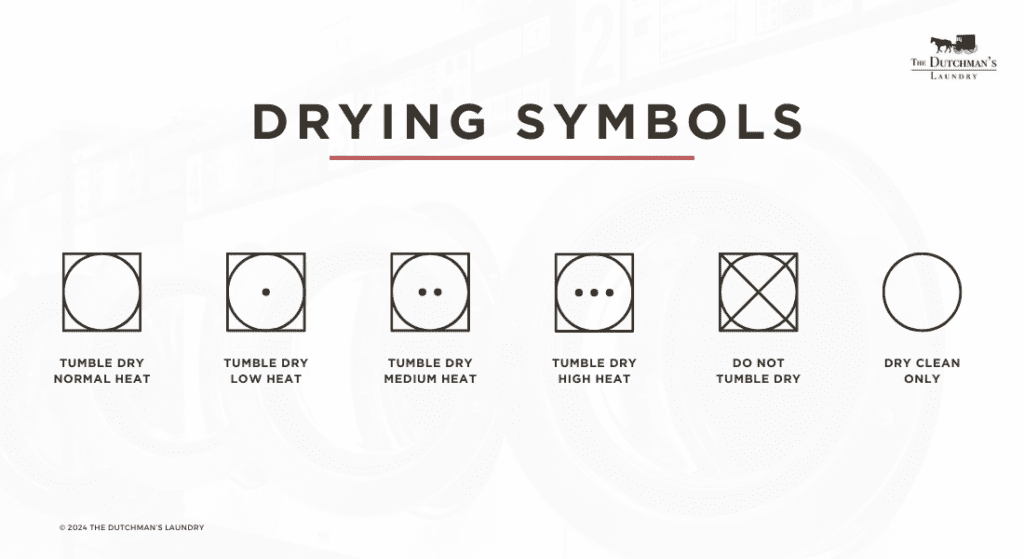
Drying Symbols
After you wash your clothes and set the right temperature, the next step is drying. Drying symbols guide you on how to dry your garments properly to avoid shrinkage, stretching, or damage. Understanding these symbols ensures your garments stay in good shape after washing.
- Tumble Dry Normal Heat: Safe for most fabrics; use standard heat settings.
- Tumble Dry Low Heat: Use a low-heat setting to protect delicate items from damage.
- Tumble Dry Medium Heat: Suitable for fabrics like synthetics that need moderate heat.
- Tumble Dry High Heat: Best for durable fabrics like towels and jeans that can handle high temperatures.
- Do Not Tumble Dry: Avoid using the dryer; air dry instead to prevent damage.
- Dry Clean Only: Garment should be professionally dry cleaned, avoiding water washing.
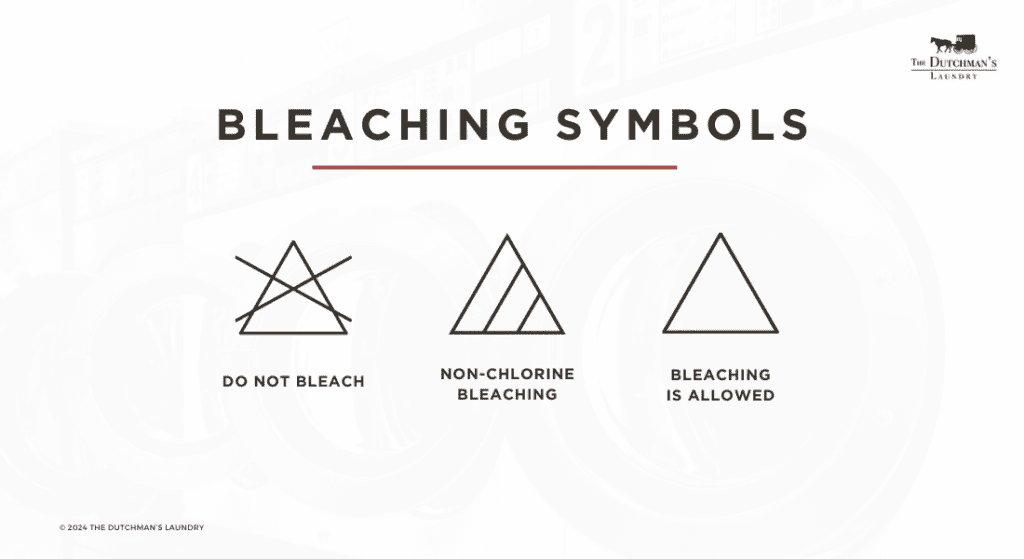
Bleaching Symbols
If you want to use bleach, it’s important to know the bleaching symbols. Bleaching symbols are indicated by the triangle. These symbols indicate whether you can safely use bleach on your clothes and which type of bleach to use.
- Bleach When Needed: You can use any type of bleach when necessary to clean and whiten fabrics.
- Non-Chlorine Bleach Only: Use only oxygen or color-safe bleach to avoid damaging the fabric.
- Do Not Bleach: Avoid using any bleach, as it may damage the garment’s material and color.
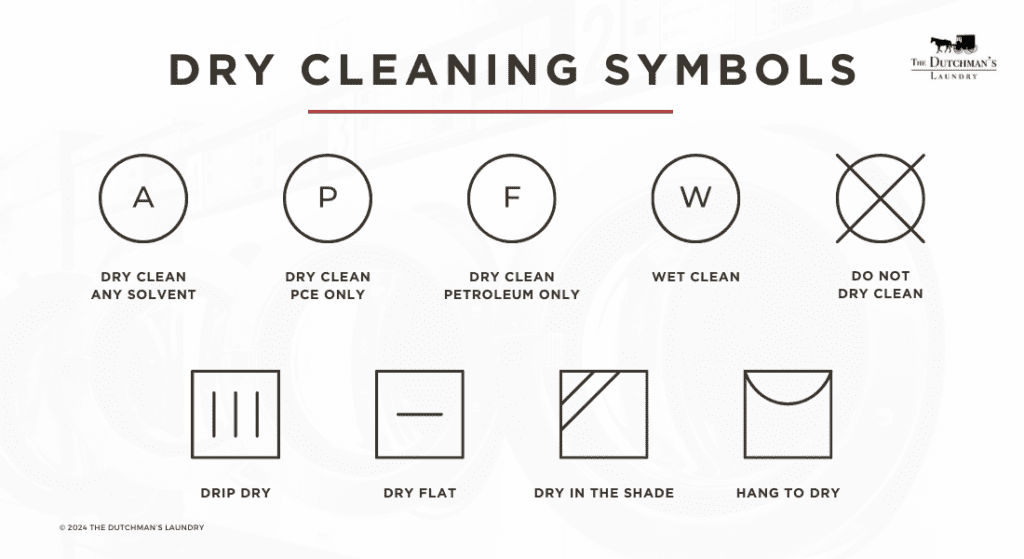
Dry Cleaning Symbols
Dry cleaning symbols are important for garments that need special care. These symbols, usually represented by a circle, indicate whether an item should be dry cleaned and what type of solvents can be used.
- Dry Clean Any Solvent: The garment can be cleaned with any type of dry cleaning solvent, offering flexibility in cleaning methods.
- Dry Clean PCE Only: Use only perchloroethylene (PCE) solvent, a common dry cleaning chemical. Avoid other solvents to prevent damage.
- Wet Clean: Indicates that the item should be cleaned using a professional wet cleaning process, a more environmentally friendly alternative to dry cleaning.
- Dry Clean Petroleum Only: Use petroleum-based solvents for dry cleaning. This is less harsh than PCE and suitable for certain fabrics.
- Do Not Dry Clean: The garment should not be dry cleaned. Instead, consider alternative cleaning methods like hand washing or machine washing if appropriate.
- Drip Dry: Allow the garment to air dry by hanging it up or laying it flat, letting excess water drip off naturally.
- Dry Flat: Lay the garment flat on a surface to dry, preventing stretching or distortion of its shape.
- Dry in the Shade: Let the garment air dry away from direct sunlight to prevent fading and fabric damage.
- Hang to Dry: Hang the garment on a clothesline or hanger to air dry, which helps maintain its shape and prevent wrinkles.

Ironing Symbols
Ironing is essential for keeping your clothes wrinkle-free and looking sharp. The ironing symbol, shaped like a small iron, shows you the appropriate heat setting for different fabrics. By following these symbols, you can prevent burning or damaging your clothes.
- Low Temperature: Iron at a low heat setting, suitable for delicate fabrics like silk or synthetic fibers. This helps avoid burning or melting the material.
- Medium Temperature: Use a medium heat setting, ideal for fabrics such as polyester and cotton blends. It provides effective wrinkle removal without excessive heat.
- High Temperature: Set the iron to high heat for sturdy fabrics like cotton and linen. This setting is effective for removing tough wrinkles but should be used cautiously to avoid scorching.
- Do Not Iron: Avoid ironing the garment entirely, as it may cause damage. Instead, consider other methods like steaming or hanging to reduce wrinkles.
- Do Not Steam: Refrain from using the steam function on your iron, as steam can damage certain fabrics. Use a dry iron setting to prevent issues like water spots or fabric warping.
What if my clothes don’t have a washing symbol label?
If your clothes lack a washing symbol label, follow these general guidelines:
- Check the Fabric Type: Identify the material of the garment. For example, cotton and polyester can usually be machine washed, while wool and silk often require hand washing.
- Use Gentle Methods: When in doubt, opt for a gentle washing method. Hand wash delicate items and use cold or lukewarm water to prevent potential damage.
- Test for Colorfastness: Before washing, test a small, hidden area of the fabric to ensure it doesn’t bleed or fade.
- Refer to Manufacturer Guidelines: If possible, check the manufacturer’s website or contact their customer service for specific care instructions.
- Consult General Care Tips: As a rule of thumb, machine wash most durable fabrics in cold or warm water and air dry or tumble dry on low heat.
Enjoy Stress-Free Laundry with The Dutchman’s Laundry Drop-Off Service
For a hassle-free laundry experience, try The Dutchman’s Laundry drop-off service. We handle all your laundry needs with professional care, so you don’t have to worry about washing symbols or fabric care. Visit us today to drop off your laundry and enjoy fresh, clean clothes without the fuss!
FAQ
Q. What do the laundry symbols mean?
A. Laundry symbols on clothing tags provide instructions for proper garment care. They indicate how to wash, dry, iron, and handle specific fabrics. Common symbols include:
- Washing Machine Icon: Indicates machine wash.
- Hand Symbol: Hand wash only.
- Circle with a Dot: Dry clean only.
- Square with Circle: Tumble dry.
- Iron Icon: Ironing instructions, with dots indicating heat levels.
Q. How do you do laundry signs?
A. Creating laundry signs involves designing visual cues that communicate laundry room rules or instructions. You can make them using:
- Materials: Choose metal, wood, or canvas for durability.
- Designs: Use clear, bold text and relevant symbols.
- Themes: Match the décor style of your laundry room, such as vintage or farmhouse.
Q. What is the 30 symbol in laundry?
A. The “30” symbol, often found inside a wash tub icon, indicates that the garment should be washed in cold water at 30°C (86°F). This setting is gentle and suitable for delicate fabrics.
Q. What are laundry marks?
A. Laundry marks are identifiers used to track garments during washing, often in commercial laundries or dry cleaners. They can include:
- Tags: Small labels sewn into clothing.
- Inked Stamps: Non-permanent marks indicating ownership or care instructions.
- Stickers: Temporary labels used for sorting and processing.
